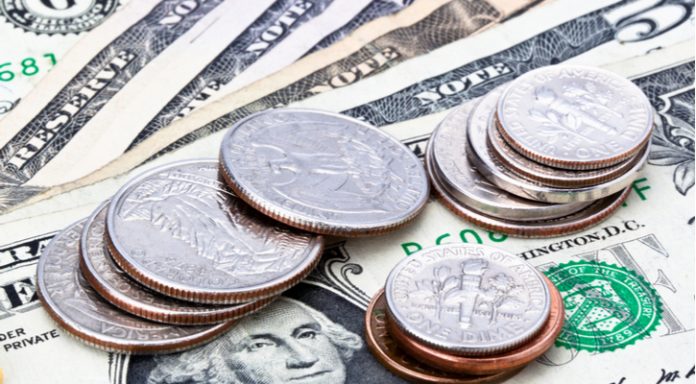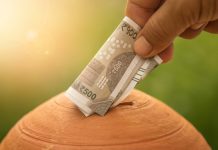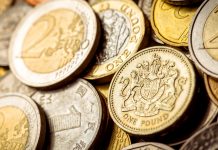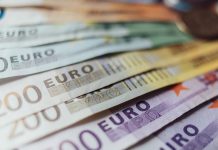The pound plunged versus the dollar on Thursday, despite the Bank of England (BoE) raising interest rates. The pound US dollar exchange rate hit a nadir of US$1.3014, its lowest level since mid-July. It has continued to fall as Friday’s session begins.
| What do these figures mean? |
|---|
|
When measuring the value of a pair of currencies, one set equals 1 unit and the other shows the current equivalent. As the market moves, the amount will vary from minute to minute. For example, it could be written: 1 GBP = 1.28934 USD Here, £1 is equivalent to approximately $1.29. This specifically measures the pound’s worth against the dollar. If the US dollar amount increases in this pairing, it’s positive for the pound. Or, if you were looking at it the other way around: 1 USD = 0.77786 GBP In this example, $1 is equivalent to approximately £0.78. This measures the US dollar’s worth versus the British pound. If the sterling number gets larger, it’s good news for the dollar. |
As analysts were expecting, the BoE voted 9-0 to raise interest rates by 0.25% to 0.75% in the previous session. This is the first time in a decade that rates have been over 0.5%. Initially the unanimous move by the monetary policy committee lifted the pound. However, the rally was cut short by a cautious sounding BoE Governor, Mark Carney, in the press conference following the announcement.
Going into the rate announcement, market participants were over 90% confident that the central bank would hike rates. They were also growing in confidence that there would be another hike later this year. Mark Carney dashed those hopes by affirming that Brexit is preventing the central bank from moving again on rates this year. The next rate hike is now expected in August next year. As investors reassessed their interest rate hike expectations lower, the price of the pound dived.
| Why do raised interest rates boost a currency’s value? |
|---|
| Interest rates are key to understanding exchange rate movements. Those who have large sums of money to invest want the highest return on their investments. Higher interest rate environments tend to offer higher yields. So, if the interest rate or at least the interest rate expectation of a country is relatively higher compared to another, then it attracts more foreign capital investment. Large corporations and investors need local currency to invest. More local currency used then boosts the demand of that currency, pushing the value higher. |
Today investors will look towards the service sector purchasing managers index (pmi). Analysts expect service sector activity to have declined in July to 54.7 from 55.1, where any figure over 50 represents expansion. The service sector is the dominant UK sector and is responsible for over 80% of economic activity. Therefore, a slight decrease can have an impact on economic growth. A weak reading could send the pound lower.
Trade tension & US jobs Data
The dollar rallied strongly across the board in the previous session on fears of an escalation in the US — China trade war. Earlier in the week President Trump had announced that he was considering increasing the 10% tariffs to 25% tariffs on US$200 billion worth of Chinese imports. On Thursday China warned that they would retaliate against such a move. This is the clearest sign yet that the trade war not about to end and could in fact just be beginning.
Today is the release of the US jobs report. The most watched report across the month. Analysts are expecting 190,00 jobs to have been created in July, unemployment to tick back down to 3.9% and wage growth to have increased 2.7% year on year. Any deviation from these numbers could create volatility in the dollar.
| How does the non-farm payroll (NFP) affect the US dollar? |
|---|
| It works like this, when there is low unemployment and high job creation, the demand for workers increases. As demand for workers goes up, wages for those workers also go up. Which means the workers are now taking home more money to spend on cars, houses or in the shops. As a result, demand for goods and services also increase, pushing the prices of the good and services higher. That’s also known as inflation. When inflation moves higher, central banks are more likely to raise interest rates, which then pushes up the currency’s worth. |
This publication is provided for general information purposes only and is not intended to cover every aspect of the topics with which it deals. It is not intended to amount to advice on which you should rely. You must obtain professional or specialist advice before taking, or refraining from, any action on the basis of the content in this publication. The information in this publication does not constitute legal, tax or other professional advice from TransferWise Inc., Currency Live or its affiliates. Prior results do not guarantee a similar outcome. We make no representations, warranties or guarantees, whether express or implied, that the content in the publication is accurate, complete or up to date. Consult our risk warning page for more details.
This article was initially published on TransferWise.com from the same author. The content at Currency Live is the sole opinion of the authors and in no way reflects the views of TransferWise Inc.





